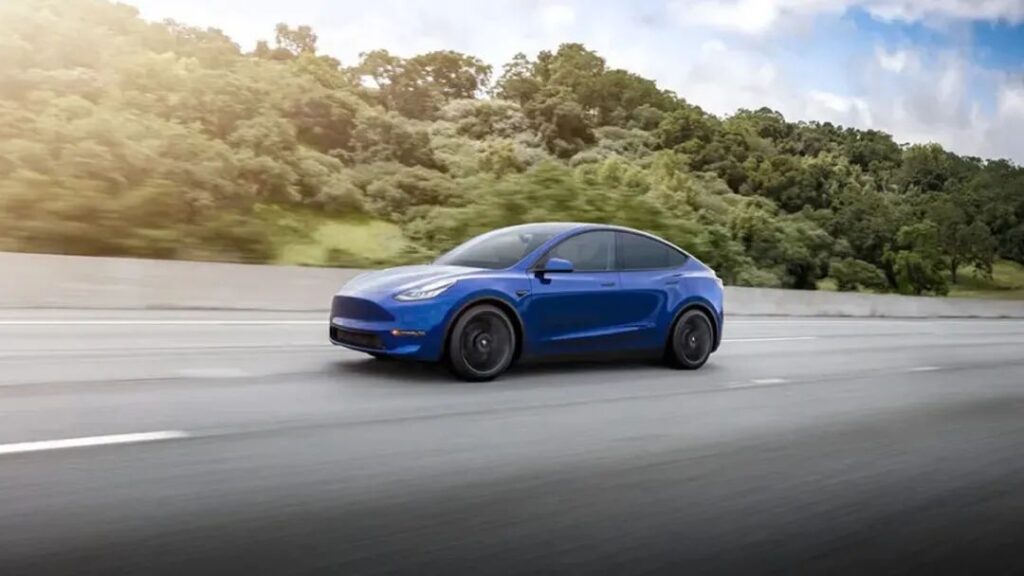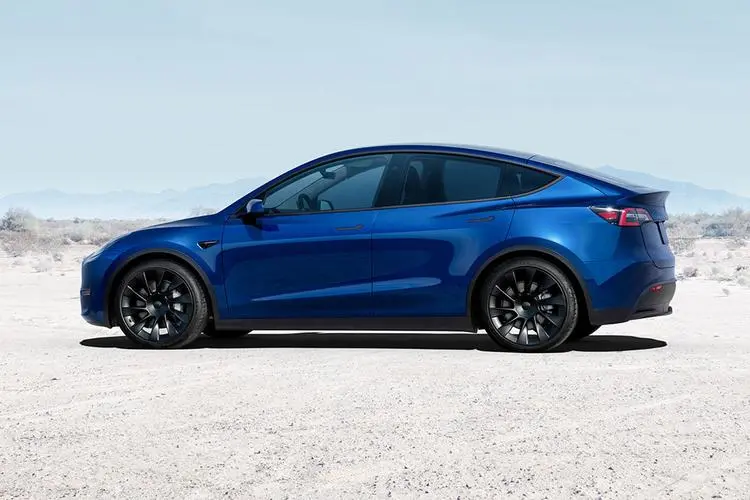This article aims to objectively document the challenges I faced after purchasing the Tesla Model Y and ultimately discuss the ideal and less ideal demographics for owning this car. If you are already an electric vehicle enthusiast, you may find this article less interesting. However, if you have relatively limited driving experience, primarily with traditional fuel-powered cars, take some time to read this; it may be helpful.

Regenerative Braking: Strong vs. Weak Mode
When I picked up my Tesla Model Y from Shenzhen to Guangzhou, the staff asked if I had ever driven a Tesla before. I replied in the negative, so they set the regenerative braking to “weak.” Tesla incorporates the controversial single-pedal mode, where pressing the accelerator increases speed, and releasing it induces deceleration. This not only reduces the need for traditional braking but also enhances energy regeneration, improving overall range. On the drive back from Guangzhou to Shenzhen, I noticed two things. First, despite setting regenerative braking to “weak,” it was not entirely disabled, and coasting distance after releasing the accelerator was relatively short. Second, the vehicle accelerated quickly, handled well, and provided an enjoyable driving experience, particularly on the highway, effortlessly overtaking other vehicles.
A few days later, I chose a less congested road and activated Tesla’s single-pedal mode. Once engaged, releasing the accelerator initiated a gradual and linear deceleration, akin to applying light traditional braking. To ensure a smooth deceleration, precise control over the release of the accelerator was necessary. Initially, mastering this could feel a bit bumpy, and if other vehicles followed closely, they might find your driving style disconcerting. A friend even expressed hesitance to tail a Tesla on the road, fearing abrupt braking. Indeed, Tesla owners unfamiliar with the single-pedal mode might encounter such issues.
Why is the single-pedal mode controversial? Some traffic accidents have been attributed to pedal misapplication. If you are a novice, you might struggle to master pedal control, necessitating extra caution at the beginning. Experienced gas car drivers should exercise even greater caution, as the pedal logic is different, and previously formed muscle memory may no longer apply. In the single-pedal mode, pressing the accelerator may put the vehicle in a deceleration state, and old muscle memory might mistake it for the brake, potentially confusing the accelerator with the brake pedal. However, it’s exhilarating to note that I adapted to this mode on the second day, and subsequent driving became increasingly enjoyable. The single-pedal mode provides a more relaxed and comfortable driving experience, and the nuanced control over pedal pressure allows you to immerse yourself more in driving. With simple pressing and releasing, it can handle over 90% of driving scenarios. My driving experience and enjoyment were once again elevated.

Parking and Charging
I’ve discovered that driving an electric vehicle in Shenzhen is more convenient than I had imagined. Charging stations are scattered throughout the underground parking lots in residential areas, and they are not exclusive to Tesla users. What’s even more surprising is that the cost of charging is quite economical. Considering a monthly parking fee of only 200 yuan, the overall cost of getting around should be cheaper than taking the Shenzhen metro. Many shopping mall underground parking lots also offer numerous charging stations, with some places even providing free charging with parking services. In Shenzhen, public parking spaces are plentiful, and electric vehicle drivers can even enjoy two hours of free parking in some locations. This undoubtedly provides a more convenient and economical parking option for electric vehicle users.
Assisted Driving
I have also started using Tesla’s standard assisted driving features, which prove to be very practical on relatively stable highways. Initially, I felt nervous every time I passed a large truck, inadvertently gripping the steering wheel tighter. Once the steering wheel is turned back, the assisted driving is disengaged, entering cruise control mode. In this scenario, I need to lightly press the brake pedal to deactivate cruise control, then quickly press the accelerator to maintain the vehicle’s forward motion. I find assisted driving to be more cumbersome than manual driving, as it requires learning not only the operational aspects but also when to enable and disable it to avoid confusion in unexpected situations. For example, Tesla may not recognize some temporary obstacles, requiring immediate intervention. Only when you become familiar with the system can you truly trust it. When you do trust it, you’ll realize why autonomous driving is a future trend, as it significantly reduces the burden of driving.
Long-distance travel using Tesla’s assisted driving is indeed much more relaxed. When your feet or back start feeling sore, you can move around and change positions. Most importantly, your focus doesn’t need to be constantly tense. Tesla’s assisted driving is stable, with excellent handling of some details. For instance, when passing an adjacent large truck, the steering wheel slightly tilts to the left to ensure a safe distance. I recommend choosing the middle lane when using assisted driving, as the error tolerance is relatively higher.

Who Should Buy a Tesla Model Y?
Transitioning from driving a gasoline car to owning a Tesla electric vehicle, my journey essentially went from being vaguely familiar with these new features to gradually adapting and eventually developing a liking for them. Therefore, my initial impression of the Tesla Model Y might only be an 80, but after extended use, I believe it deserves a 90. However, every new feature that enhances the driving experience requires careful consideration, time, and effort to understand and learn. Otherwise, accidents may occur due to unfamiliarity with these features, such as misapplying the pedal or failing to take control promptly during assisted driving collisions, among others.
So, who might not be too suitable for this car? Some people in life are not very interested in new things. I have friends who have driven a Model Y for over a year without ever using the assisted driving feature. Of course, it’s their freedom, and I don’t think less of them. I just feel it’s a bit of a waste, especially since we all paid for these new features, including my dad. If he were to change cars, I might not recommend a Tesla to him because he has driven gasoline cars for most of his life, and there’s no need to force him to adapt to this digital age.
But if you want a top-notch driving experience under ¥300,000 , I think the Model Y is a choice that won’t disappoint. Its spacious interior almost turned me into a cargo driver. However, this car does have some minor issues, such as an imperfect navigation system. For unfamiliar routes, I still rely on smartphone navigation. The lack of ventilated seats is a regret, and there are also some bugs in the voice system. As mentioned earlier, using assisted driving for long distances is enjoyable because I am a freelancer who usually chooses to return home during non-peak hours. If you are the type who wants to travel or return home by car during peak periods such as National Day or the Spring Festival, my advice is not to choose an electric car.